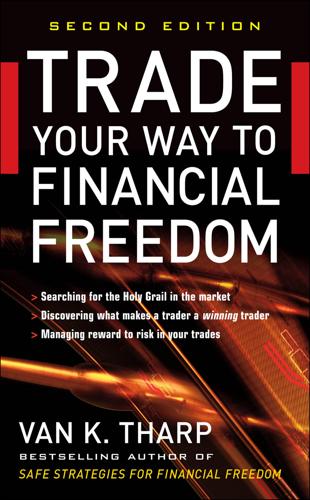
Trade Your Way to Financial Freedom
by
van K. Tharp
Published 1 Jan 1998
Her second target was at $407, and her final target was $424 where there was a lot of resistance to any higher movement. Her plan was to sell off her position in thirds at each target level. And on February 17, when the market confirmed her analysis by moving way above the initial entry into the 370 range, she moved her stop to $367.45. She now had locked in a profit of 15 points (that is, 1.2R). Her first target of $391 would give her about a 2R profit. Figure 12.5 Ellen believes a major price break (up or down) will occur on February 16 Figure 12.6 Ellen used Fibonacci retracements to set up her targets Ken—the Spreader-Arbitrager When Ken noticed the band that GOOG was forming, similar to those shown in Figures 12.2 and 12.5, he believed that GOOG would also fill the gap created on Monday.
…
Mary—the Long-Term Trend Follower Mary purchased this ETF in August 2005 and has held it ever since then. She bought it at $36.50, and since then, she has kept a trailing stop of three times the weekly volatility. Currently that stop is at $41.10, so she has locked in a $4.60 profit per share. Her initial risk was about $4.50 per share, so she has a 2R profit right now and has locked in a profit of just over 1R with her current stop. Although the ETF has been in a consolidation pattern for five weeks, she’s hoping the uptrend resumes soon. Dick—the Short-Term Swing Trader Dick set up his bands and discovered that there was strong support at $44, so when EWY bounced off of that level on February 13, Dick took a long position at $44.20 with a stop at $43.20.
…
The chart shows strong price support at $29.60. Since it was close to that level at the close on February 17, Dick sold half of his position at $29.90 for a little less than a 1R profit. He hoped to sell the remainder the next day on a breakdown to $28.80 or lower. His current stop on the rest of his position is $30.80, so he has locked in a profit of 80 cents. Victor—the Value Trader Victor looked at the economic picture behind TOL, and he was impressed. First, TOL earned $4.78 per share for the last fiscal year, giving it a P/E ratio of 6.97. That alone was enough to get Victor interested in the stock from a value perspective.

Flash Boys: Not So Fast: An Insider's Perspective on High-Frequency Trading
by
Peter Kovac
Published 10 Dec 2014
They figure that if the stock goes up, they take the profit (and pad their bonus), and if it goes down, they have a cushion of five cents before they have to report a loss to their bosses. That is old Wall Street. But economists and risk managers would beg to differ. They would say that your decisions about the future should only be based on your expectations about the future, not your past performance. The fact that you locked in a profit of five cents a minute ago doesn’t say anything about your ability to make another penny trading in the next minute. If you now lose another four cents, you lost another four cents – you can’t say that you “still made” one cent on the trade. Remarkably, old Wall Street still thinks this way, probably because at the end of the day the trader often reports the net profit of his trading and the customer’s subsidy of his trading – so a four cent loss trading is cushioned by the customer’s five cents, and the trader reports a net profit of one cent.
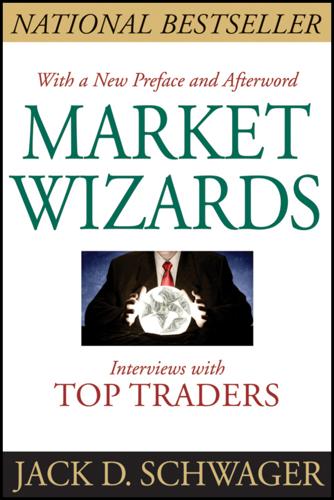
Market Wizards: Interviews With Top Traders
by
Jack D. Schwager
Published 7 Feb 2012
For example, if a Japanese electronics manufacturer negotiates an export sale of stereo equipment to the U.S. with payment in dollars to be received six months hence, that manufacturer is vulnerable to a depreciation of the dollar versus the yen during the interim. If the manufacturer wants to assure a fixed price in the local currency (yen) in order to lock in a profit, he can hedge himself by selling the equivalent amount of U.S. dollars in the interbank market for the anticipated date of payment. The banks will quote the manufacturer an exchange rate for the precise amount required, for the specific future date. Speculators trade in the interbank currency market in an effort to profit from their expectations regarding shifts in exchange rates.
…
Are you a self-taught trader, or did another trader teach you worthwhile lessons? I am a self-taught trader who is continually studying both myself and other traders. Do you decide where you are getting out before you get in on a trade? I set protective stops at the same time I enter a trade. I normally move these stops in to lock in a profit as the trend continues. Sometimes, I take profits when a market gets wild. This usually doesn’t get me out any better than waiting for my stops to close in, but it does cut down on the volatility of the portfolio, which helps calm my nerves. Losing a position is aggravating, whereas losing your nerve is devastating.

The Billionaire's Apprentice: The Rise of the Indian-American Elite and the Fall of the Galleon Hedge Fund
by
Anita Raghavan
Published 4 Jun 2013
As Hussain fed her details about Google’s poor financial results, Khan passed the information on to Rajaratnam. After one call to him on July 13, Rajaratnam sold all his Google stock and took a $25 million short position. Later that month, when Google reported disappointing financial results as Hussain had predicted it would, Rajaratnam netted millions of dollars in profits. Khan made money too, locking in a profit of more than $500,000. As forthcoming as Khan was about Hussain and Rajaratnam to government officials, she was lying about her trading in Hilton and would not divulge her source for the inside information. When prosecutors asked about the purchases of Hilton stock, Khan said she made the Hilton trades on the advice of her broker.
…
After saying he wanted to be “long into the numbers,” Rengan bet heavily against Arris: Rengan SEC testimony. On July 27, Arris’s stock fell nearly 20 percent: Interactive Data via FactSet Research Systems. Rengan, the only investor in the fund, netted $270,000: US v. Rajaratnam, Franks hearing, Michaelson Arris chronology said Rengan made over $250,000 and Sedna locked in a profit of more than $1.1 million. “u r my heroine”: US v. Rajaratnam, Franks hearing, Michaelson Arris chronology. “It definitely feels like there are less quality women out there”: “Bachelors Compete for Dwindling Supply of Bachelorettes,” FoxNews.com, December 27, 2001. “Arris [thank you] for getting us out”: US v.

The Payoff
by
Jeff Connaughton
An internal review of a WaMu loan office in Southern California revealed that 83 percent of its loans contained instances of confirmed fraud; in another office, the figure was 58 percent. And what did WaMu management do when it became clear that fraud rates were rising as housing prices began to fall? Rather than curb its reckless practices, it decided to try to sell a higher proportion of these risky, fraud-tainted mortgages into the secondary market, thereby locking in a profit for itself as it spread the contagion into the capital markets. The second hearing showed that OTS had failed abjectly to regulate WaMu and to protect the public from the consequences of WaMu’s excessive risk-taking and toleration of widespread fraud. Although WaMu accounted for 25 percent of OTS’s regulatory portfolio, OTS adopted a laissez-faire approach.
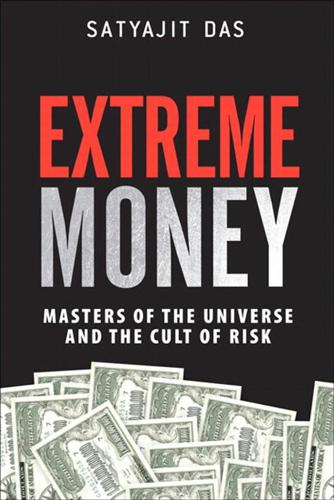
Extreme Money: Masters of the Universe and the Cult of Risk
by
Satyajit Das
Published 14 Oct 2011
The short gold position protected any investor from a sudden unexpected fall in the gold price. If the gold price fell, then the shares would also fall, as MG’s gold reserves would be worth less. The fall in prices would create profits on the short gold position, as you could buy gold at the lower price, deliver it to the buyer at the agreed higher price and lock in a profit. The loss on the shares would be offset by the gain on the short gold position. The position is hedged, free of risk, at least in theory. “My analysis shows that the positions were highly risky.” Mailer is all smiles at my unrelenting assault—he likes offense. The investment strategy is based on the relationship between MG shares and the gold price.
…
Classically, arbitrage took advantage of price differentials between two markets. Assume cocaine is trading at $1,000/ounce in London and $1,100/ounce in New York, and the cost of transportation between the two centers is $25/ounce. An arbitrager could purchase an ounce in London, transport it to New York, and sell it to lock in a profit of $75 ounce without any financial risk. In an arbitrage-free world, where the value of a firm’s debt or equity differed from its intrinsic value driven by its earnings or cash flows, Modigliani and Miller showed that investors would take advantage of any discrepancy in market prices. By investing in different combinations of debt and shares, the investor could create a future income stream of the same size and risk.
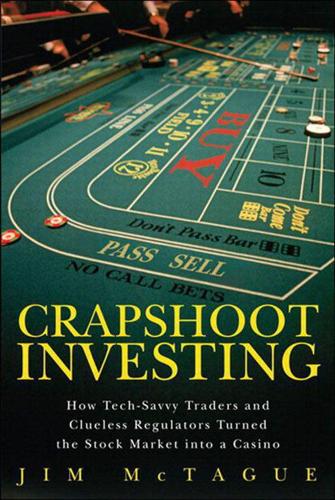
Crapshoot Investing: How Tech-Savvy Traders and Clueless Regulators Turned the Stock Market Into a Casino
by
Jim McTague
Published 1 Mar 2011
The bottom line was that stock prices fell like an avalanche because few people wanted them at that moment.21 Initially, the pickup in velocity was due to “stop loss” orders. These are like ejection seat buttons in a jet fighter. If the jet is falling to earth, the pilot ejects to save his life. Some investors place stop loss orders below the current price of a holding, to lock in a profit. Let’s say the stock is at $30 and the investor paid $20 for it. If he’s suddenly feeling bearish about the market, he could place a stop loss order to sell at the market if the securities price should drop to $28. A market price is the best price available at the time. If the investor is lucky, he’ll get “stopped out” exactly at $28.

The Nature of Technology
by
W. Brian Arthur
Published 6 Aug 2009
Such contracts allowed a farmer planting soybeans in Iowa, say, to sell them in six months’ time at the fixed price of $8.40 per bushel, regardless of the market price at that future time. If the price was higher than $8.40 the farmer could sell on the market; if the price was lower he could exercise the option, thus locking in a profit at the cost of purchasing the option contract. The value of the contract “derived” from the actual market value—hence it was called a derivative. In the 1960s, putting a proper price on derivatives contracts was an unsolved problem. Among brokers it was something of a black art, which meant that neither investors nor banks in practice could use these with confidence.

The Secret Club That Runs the World: Inside the Fraternity of Commodity Traders
by
Kate Kelly
Published 2 Jun 2014
(It was much the same principle that worked for Glencore’s oil marketers, who sourced crude oil from producers in far-flung locations and then shorted crude through the futures market as they waited for the physical shipments to arrive, albeit with more complicated storage and financing fees tacked on at the end.) Then the aluminum-owning hedge fund could sell its warrant to another party, who might wait for aluminum spot prices to rise, locking in a profit. The LME’s increased load-out rate had done little to assuage Coke and other aluminum users. Premiums had gone from about 6.5 cents in 2010 to 11 cents by then, and would rise to a record of nearly 12 cents by the summer of 2013. While Metro was thriving, Goldman’s commodity traders were grappling with a major setback.

The Perfect Bet: How Science and Math Are Taking the Luck Out of Gambling
by
Adam Kucharski
Published 23 Feb 2016
The game is 50/50, which means that for a $1.00 bet, a fair return would be $1.00: if a gambler bet on both players, the bettor would come out even. But a bookmaker won’t offer odds that return $1.00. Instead, it might offer a payoff of $0.95. Anyone who bets on both players will therefore end up $0.05 poorer. If the same total amount is wagered on each player, the bookmaker will lock in a profit. But what if most bets go on one of the players? The bookmaker will need to adjust the odds to make sure it stands to gain the same amount regardless of who wins. The new odds might suggest one player is less likely to come out on top. Smart gamblers, who know that both players are equally good, will therefore bet on the one with longer odds.

Broken Markets: How High Frequency Trading and Predatory Practices on Wall Street Are Destroying Investor Confidence and Your Portfolio
by
Sal Arnuk
and
Joseph Saluzzi
Published 21 May 2012
Quickly, every algo trading order in a given stock follows each other up or down (or down and up), creating huge, whip-like price movements on relatively little volume. This has led to the development of predatory algo trading strategies. These strategies are designed to cause institutional algo orders to buy or sell shares at prices higher or lower than where the stock had been trading, creating a situation in which the predatory algo can lock in a profit from the artificial increase or decrease in the price. To illustrate, use an institutional algo order pegged to the NBBO with discretion to pay up to $20.10. First, the predatory algo uses methods similar to the liquidity rebate trader to spot this as an institutional algo order. Next, with a bid of $20.01, the predatory algo goes on the attack.
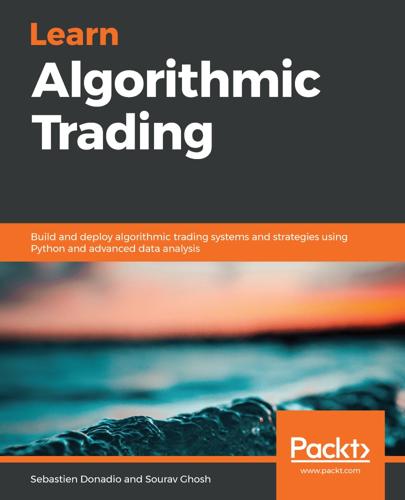
Learn Algorithmic Trading
by
Sebastien Donadio
Published 7 Nov 2019
At this point, the spoofer initiates a short position and cancels all the spoofing bid orders, causing other market participants to do the same. This drive prices back down from these synthetically raised higher prices. When prices have dropped sufficiently, the spoofer then buys at lower prices to cover the short position and lock in a profit. Spoofing algorithms can repeat this over and over in markets that are mostly algorithmically trading and make a lot of money. This, however, is illegal in most markets because it causes market price instability, provides participants with misleading information about available market liquidity, and adversely affects non-algorithmic trading investors/strategies.
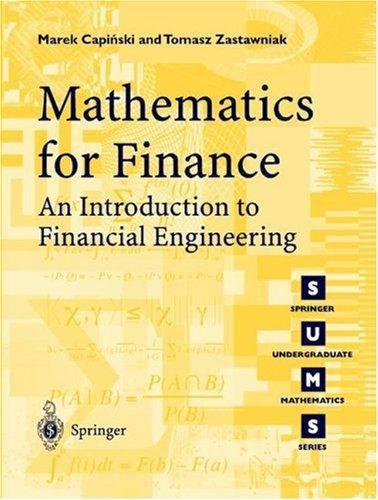
Mathematics for Finance: An Introduction to Financial Engineering
by
Marek Capinski
and
Tomasz Zastawniak
Published 6 Jul 2003
Assumption 1.6 (No-Arbitrage Principle) There is no admissible portfolio with initial value V (0) = 0 such that V (1) > 0 with non-zero probability. In other words, if the initial value of an admissible portfolio is zero, V (0) = 0, then V (1) = 0 with probability 1. This means that no investor can lock in a profit without risk and with no initial endowment. If a portfolio violating this principle did exist, we would say that an arbitrage opportunity was available. Arbitrage opportunities rarely exist in practice. If and when they do, the gains are typically extremely small as compared to the volume of transactions, making them beyond the reach of small investors.
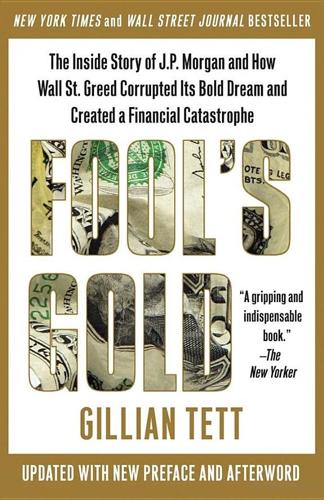
Fool's Gold: How the Bold Dream of a Small Tribe at J.P. Morgan Was Corrupted by Wall Street Greed and Unleashed a Catastrophe
by
Gillian Tett
Published 11 May 2009
Some wanted to protect against expected interest-rate increases, while others believed rates were likely to fall. Players also had different motives for wanting to place bets on future asset prices. Some investors liked derivatives because they wanted to control risk, like the wheat farmers who preferred to lock in a profitable price. Others wanted to use them to make high-risk bets in the hope of making windfall profits. The crucial point about derivatives was that they could do two things: help investors reduce risk or create a good deal more risk. Everything depended on how they were used and on the motives and skills of those who traded in them.
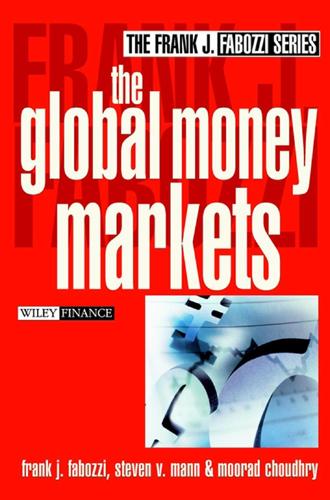
The Global Money Markets
by
Frank J. Fabozzi
,
Steven V. Mann
and
Moorad Choudhry
Published 14 Jul 2002
The obvious risk from such a strategy is that the level of short-term rates rises during the term of the loan, so that when the loan is refinanced the bank makes a lower profit or a net loss. Managing this risk exposure is the key function of an ALM desk. As well as managing the interest rate risk itself, banks also match assets with liabilities—thus locking in a profit—and diversify their loan book to reduce exposure to one sector of the economy. Another risk factor is liquidity. From a banking and Treasury point of view the term liquidity means funding liquidity, or the “nearness” of money. The most liquid asset is cash. Banks bear several interrelated liquidity risks, including the risk of being unable to pay depositors on demand, an inability to raise funds in the market at reasonable rates, and an insufficient level of funds available with which to make loans.
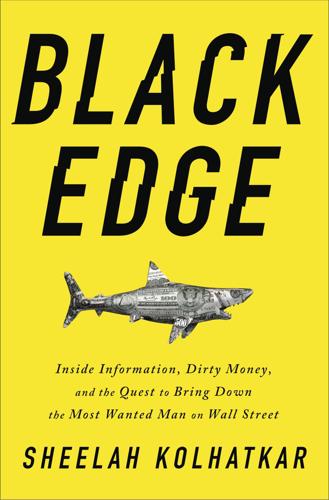
Black Edge: Inside Information, Dirty Money, and the Quest to Bring Down the Most Wanted Man on Wall Street
by
Sheelah Kolhatkar
Published 7 Feb 2017
Everyone, particularly Cohen, wanted access to his reports, but Grodin did not like to share them. He had recruited Lee from a brokerage firm called John Hancock Securities, where he worked as an analyst after getting an engineering degree from Duke, and cultivated him at SAC. Using Lee’s “datapoints,” as he called them, Grodin would methodically formulate a trade and quickly lock in a profit, often not a huge one. Cohen preferred a more aggressive approach. If a trade looked good, Cohen thought you should bet as much as you could. There were regular conflicts about getting access to Lee’s research, and shouting matches between Cohen and Grodin erupted with increasing frequency.
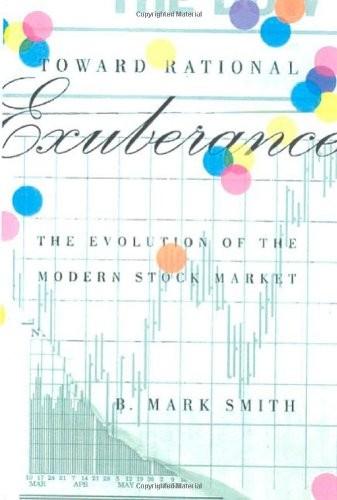
Toward Rational Exuberance: The Evolution of the Modern Stock Market
by
B. Mark Smith
Published 1 Jan 2001
Within seconds, prices of the S&P 500 index futures had plunged 20.75 points, more than the entire drop on the previous Friday. Normally the index arbitrageurs described in chapter 14 would be expected to step in, buying futures with the intention of selling the stocks included in the index, locking in a profit if the price they paid for the futures contract was less than the aggregate price at which they sold the index stocks. But no one knew with any degree of certainty where stock prices would open in New York. The index arbs sat on their hands, and the futures fell lower and lower. As the 9:30 opening arrived in New York, the market-making specialists on the floor of the New York Stock Exchange struggled to find prices at which they could balance supply and demand and commence trading in the stocks for which they were responsible.

Stock Market Wizards: Interviews With America's Top Stock Traders
by
Jack D. Schwager
Published 1 Jan 2001
It almost sounds as if you are performing a service. If I understand you correctly, you find buyers and sellers who have different costs or returns, due to a distortion, such as differences in tax treatment. You then devise a transaction based on this difference in which each party ends up better off, and you lock in a profit for performing the transaction. Exactly. The key word you used was service. That's one of the key reasons why the results we have delivered are so different from those of traditional investment managers, who buy and sell and then hope for the best. How could you ever lose in that type of transaction?
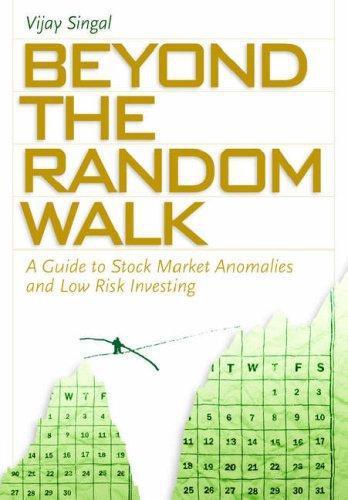
Beyond the Random Walk: A Guide to Stock Market Anomalies and Low Risk Investing
by
Vijay Singal
Published 15 Jun 2004
There are, however, three conditions under which options might seem attractive. First, if there is significant risk of failure, then the option can limit the loss. Second, an option may be used to lock in gains already earned. For example, if the target in a cash offer has appreciated from $20 to $25, then buying an at-the-money put option would lock in a profit of $5 (less the put premium). Third, in the case of stock mergers, if it is not easy to short-sell, the investor can buy a put option on the acquiring firm’s stock. Other than these special cases, trading the underlying stock is a superior strategy. USING MUTUAL FUNDS Mutual funds that specialize in merger arbitrage are the simplest vehicles for taking advantage of this mispricing.
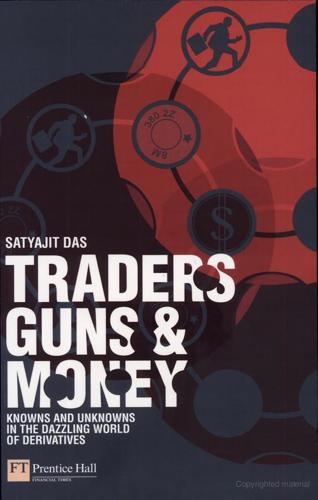
Traders, Guns & Money: Knowns and Unknowns in the Dazzling World of Derivatives
by
Satyajit Das
Published 15 Nov 2006
DAS_C06.QXP 8/7/06 4:43 PM Page 169 5 N The perfect storm – risk mismanagement by the numbers 169 They could buy the coupons and corpus separately at a lower price than the 30-year bond itself. They did precisely this, buying the components separately, and selling the 30-year bond short, to lock in a profit. The arbitrage group’s trade made money. Gutenfreund’s trade – which quickly gained the soubriquet ‘the Whale’ – lost a similar sum. Coats, a competitor of Meriwether’s in the battle for succession within the firm, was furious. The trades themselves marked a bundary. The purchase of the bonds represented the old – traditional trading.

The Trade Lifecycle: Behind the Scenes of the Trading Process (The Wiley Finance Series)
by
Robert P. Baker
Published 4 Oct 2015
At every price, the profit on the future together with the profit on sale of apples is greater than zero. Profit 0 FIGURE 4.3 Profit curve 5p 10p Price 55 Asset Classes Profit Spot 0 5p 10p Price Future FIGURE 4.4 Profit curve with future So if the grower can find someone prepared to sell a future at the right price and timed for when his apples are ready for market, he can lock in a profit and remove his price risk. The speculator will be selling such futures contracts hoping to find other market participants such as cider manufacturers who will want to buy the equivalent contracts. In this way he can offset his risk and charge a profit in the difference between buy and sell prices.

A First-Class Catastrophe: The Road to Black Monday, the Worst Day in Wall Street History
by
Diana B. Henriques
Published 18 Sep 2017
A month earlier, Binns attended a meeting of the CFTC’s financial product advisory committee in Washington to defend program trading. (See Reuters, “Big Investors Defend Programmed Trading.”) He had been joined at that meeting by Frederick Grauer, the president of Wells Fargo Investment Advisors. Grauer complained that Wall Street firms traded ahead of the sales by portfolio insurers to lock in a profit, thereby exacerbating the selling pressure in the futures market. This suspicion was, in fact, proven correct by the Brady Commission, which said that seven firms had sold short in immense volume on Friday, October 16, anticipating the sales that portfolio insurers would need to make on Monday.
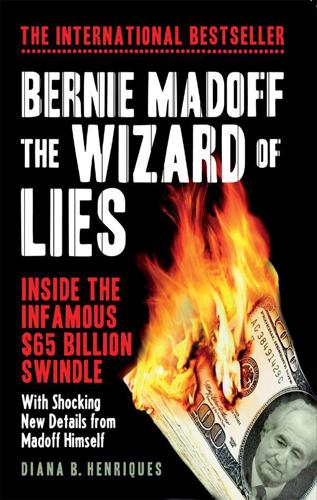
Bernie Madoff, the Wizard of Lies: Inside the Infamous $65 Billion Swindle
by
Diana B. Henriques
Published 1 Aug 2011
Riskless arbitrage is an age-old strategy for exploiting momentary price differences for the same product in different markets. It could be as simple as ordering cartons of cigarettes by telephone from a vendor in a low-cost state and simultaneously selling them over the phone at a higher price in states where they are more expensive, thereby locking in a profit. Or it could be as complex as using computer software to instantly detect a tiny price differential for a stock trading in two different currencies and execute the trades without human intervention—again, locking in the profit. What distinguished riskless arbitrage from the more familiar “merger arbitrage” of the 1980s—which involved speculating in the securities of stocks involved in possible takeovers—was that a profit could be captured the moment it was perceived, if the trade could be executed quickly enough.
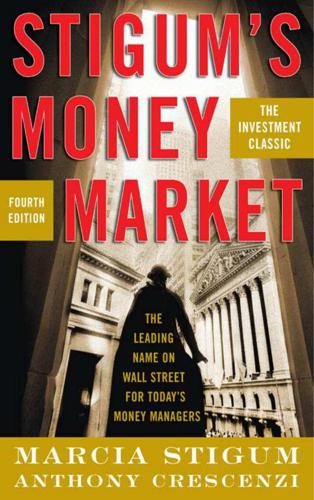
Stigum's Money Market, 4E
by
Marcia Stigum
and
Anthony Crescenzi
Published 9 Feb 2007
Funding a 6-month asset with 1-month money would leave a bank that planned to match fund the tail of the asset in need of 5-month money, a maturity in which the market is thinner than, say, 3-month money. If a bank buys 4s against 6s or pursues some similar strategy, it creates an open position in its book and thereby assumes a rate risk. One way it can eliminate that risk while simultaneously locking in a profit from the mismatch is by entering into a forward forward contract; that is, buying money of a fixed maturity for future delivery. In the example above, the appropriate forward forward contract would be for 2-month money to be delivered four months hence. The seller of a forward forward assumes a rate risk because he cannot be sure how much it will cost him to fund that commitment.
…
For example, a farmer growing corn might, before the harvest, sell some portion of his crop to a buyer at a fixed price for delivery at harvest. For the farmer, this transaction reduces risk. To grow corn, the farmer incurs various costs; by selling his corn forward, he guarantees the revenue he will receive for his corn at harvest, and he thus locks in a profit on his operations. That profit may be more or less than what he would have earned if he had waited to sell his crop at harvest at the spot price then prevailing in the cash market (market for immediate delivery) for corn. FUTURES VERSUS FORWARD CONTRACTS Most futures contracts, like many forward contracts, specify that the seller of the contract will deliver to the buyer a specific amount of a specific item at a specific price on a specified future date.

Derivatives Markets
by
David Goldenberg
Published 2 Mar 2016
Scenario 1 First, suppose that the spot wheat price drops to PT(ω)=$5.85/bu at the end of 4 months. Compared to the current wheat spot price level, that is a loss of 500,000*(+PT(ω)–Pt)=500,000*(+$5.85–$5.9875)=–$68,750. Fortunately, the farmer was hedged in the forward market where he made a profit of, Overall, his position locked in a profit of $732,500–$68,750=$663,750. TABLE 2.7 Profit from the Fully Hedged Spot Position Wheat Spot Price @ Expiration Profits from a Naked (Unhedged) Long Spot Wheat Position Profit To a Naked Short Forward Position in 500,000 bu. of wheat Profits to the Combined (Fully Hedged) Position: Long Spot, Short Forward 5.8 –93750 757500 663750 5.85 –68750 732500 663750 5.9 –43750 707500 663750 5.95 –18750 682500 663750 6 6250 657500 663750 6.05 31250 632500 663750 6.1 56250 607500 663750 6.15 81250 582500 663750 6.2 106250 557500 663750 6.25 131250 532500 663750 6.3 156250 507500 663750 6.35 181250 482500 663750 6.4 206250 457500 663750 6.45 231250 432500 663750 6.5 256250 407500 663750 6.55 281250 382500 663750 6.6 306250 357500 663750 6.65 331250 332500 663750 6.7 356250 307500 663750 6.75 381250 282500 663750 TABLE 2.8 Price Data Summary Current Spot Price Pt $5.9875 bu Current Forward Price Ft,T $7.315 /bu Ultimate Spot Price PT(ω) ?
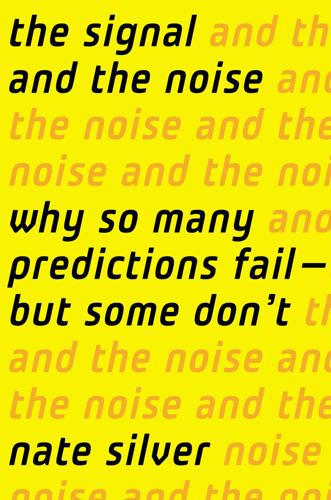
The Signal and the Noise: Why So Many Predictions Fail-But Some Don't
by
Nate Silver
Published 31 Aug 2012
And in the sixth, back in Portland, they fell out of rhythm early and never caught the tune, as the Blazers marched to a 103-93 win. Suddenly the series was even again, with the deciding Game 7 to be played in Los Angeles. The prudent thing for a gambler would have been to hedge his bet. For instance, Voulgaris could have put $200,000 on Portland, who were 3-to-2 underdogs, to win Game 7. That would have locked in a profit. If the Blazers won, he would make more than enough from his hedge to cover the loss of his original $80,000 bet, still earning a net profit of $220,000.9 If the Lakers won instead, his original bet would still pay out—he’d lose his hedge, but net $320,000 from both bets combined.* That would be no half-million-dollar score, but still pretty good.
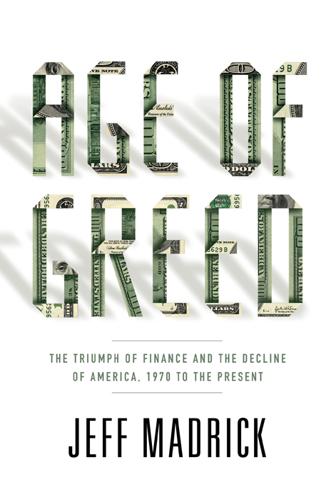
Age of Greed: The Triumph of Finance and the Decline of America, 1970 to the Present
by
Jeff Madrick
Published 11 Jun 2012
They leveraged those gains by borrowing money. Arbitrage opportunities were found in other kinds of securities as markets developed, especially in options and futures contracts on government bonds and international currencies. Mergers gave rise to this riskier form of arbitrage. An arbitrageur could lock in a profit when one company offered shares at a premium for another. The arbs could buy the target company’s shares and sell the acquirer’s shares, thus locking in the spread. (They typically sold short—that is, sold shares they did not actually own but merely borrowed at an interest cost with the promise to give them back even if the price of the shares rose.)
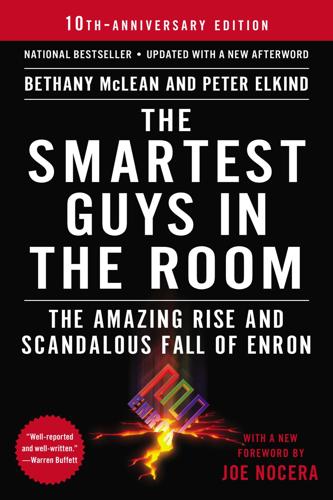
The Smartest Guys in the Room
by
Bethany McLean
Published 25 Nov 2013
Three years after that, in January 1984, InterNorth came calling, asking him to set up its oil-trading subsidiary and offering him a lucrative package, which included Wall Street–style bonuses based on whatever profits he brought in. By the time of the InterNorth-HNG merger, Borget’s operation was about a year and a half old. Back then, oil trading was the hot new thing, both on Wall Street and in the oil patch. The big oil companies had long traded contracts promising to deliver oil in the future. This was a way to lock in a profit and mitigate the risk that oil prices would rise or fall. But the business had been limited by a couple of factors. For one thing, there was no standard contract for oil, which meant that the details of every trade had to be hammered out separately. And second, these contracts, by definition, meant that a cargo of oil would be delivered (or received) at a certain time in the future.
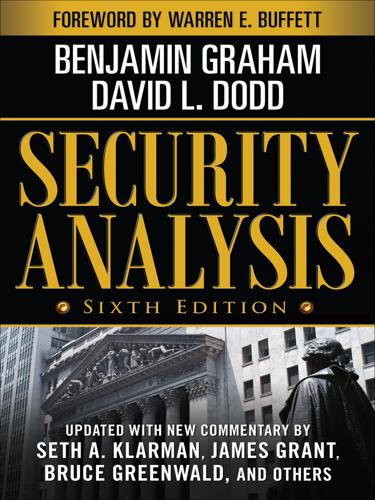
Security Analysis
by
Benjamin Graham
and
David Dodd
Published 1 Jan 1962
(p. 64) He himself had gone from the ridiculous to the sublime (and sometimes back again) in the conduct of his own investment career. His quick and easy grasp of mathematics made him a natural arbitrageur. He would sell one stock and simultaneously buy another. Or he would buy or sell shares of stock against the convertible bonds of the identical issuing company. So doing, he would lock in a profit that, if not certain, was as close to guaranteed as the vicissitudes of finance allowed. In one instance, in the early 1920s, he exploited an inefficiency in the relationship between DuPont and the then red-hot General Motors (GM). DuPont held a sizable stake in GM. And it was for that interest alone which the market valued the big chemical company.